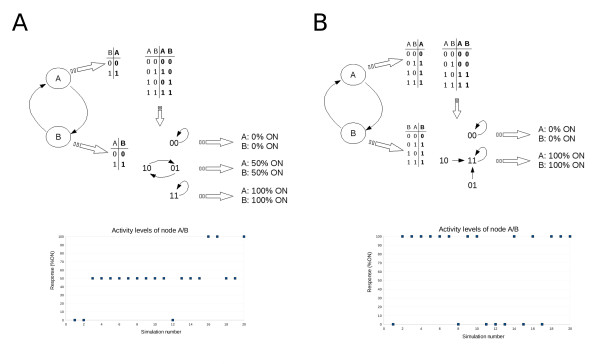Figure 3.
A simple positive feedback loop. Two possible configurations of a positive feedback loop in which node A activates node B and node B activates node A. A) First configuration, in which the truth tables and state transition diagram depict the most trivial activation mechanisms of nodes A and B; each node is simply activated when the other node is 1 and deactivated when the other node is 0. In addition a sample simulation experiment (consisting of 20 simulations with randomly selected initial states) using ChemChains was done to illustrate the connection between the system's three attractors and the percent ON measure of each node (note that the percent ON levels where the same for both nodes, hence one diagram per configuration is shown). B) In the second sample configuration of a two-component positive feedback loop the truth tables depict activation mechanisms of both nodes in which each node is, similarly to the first configuration, activated by the other node, but is not necessarily turned off when the other node is off. As illustrated by the state transition diagram and a ChemChains simulation experiment (also consisting of 20 simulations with randomly selected initial states) in Panel B, this set-up results in two attractors, and thus two possible percentage ON levels (0% and 100% ON) for each node, depending on the initial condition.

